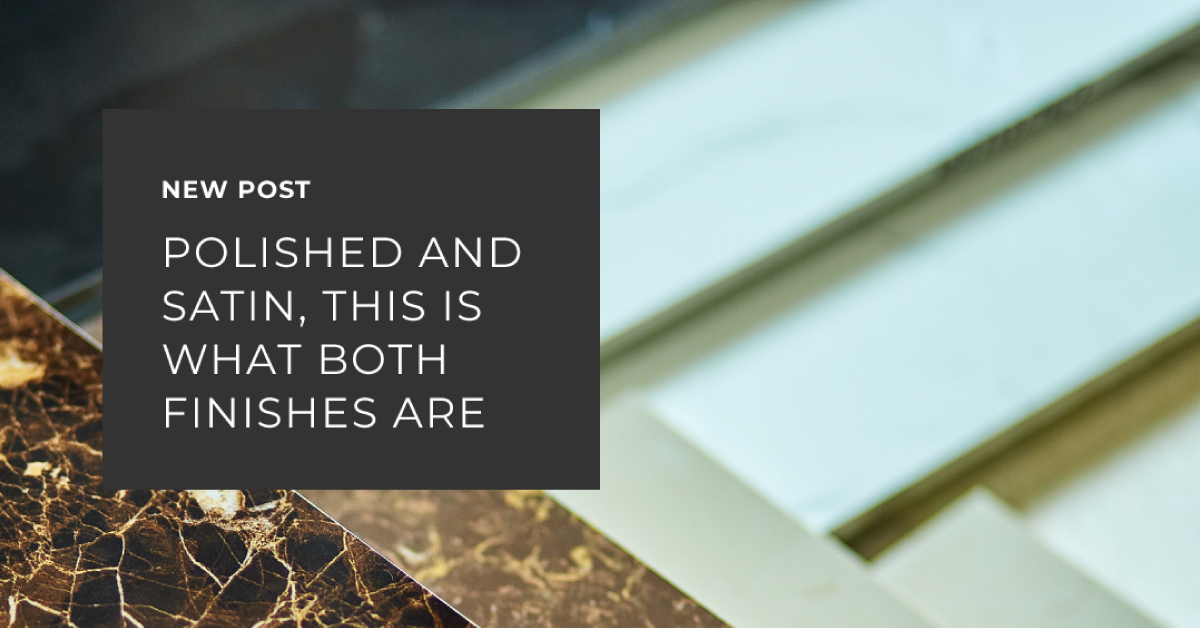Differences between polished and satin finished tiles
Discover two of the most common ceramic finishes.
Tiles are often accompanied by words such as “polished” or “satin”, which I’m sure you’ve heard at some point. But do you know what they mean? First of all, you should know that both concepts refer to different types of finishes that, once the desired shape has been achieved, are applied to the tiles to make them more realistic in terms of the texture they reproduce.
- To begin with, the production process of a polished tile is somewhat different from the collections with gloss, matt or satin finishes. While the other finishes do not require further treatment, polished tiles, which are always high gloss, go through a special process to give them that characteristic, almost mirror-like finish. Therefore, it is to be expected that the duration of the shine is much longer.
- Polishing is one of the most popular finishes. Among its advantages, it is worth mentioning that, above all, it achieves a clean and elegant finish that eliminates any imperfections that may remain on the tile. However, if there is one thing that makes polished tiles stand out, it is their brightness and the luminosity they bring to rooms. In fact, it is perfect for collections that reproduce the elegance and sophistication of marble.
- The satin finish, meanwhile, could be defined as a “soft” finish that achieves an aesthetic piece with a pleasant feel that, in addition, stands out for its matt effect that allows light to reflect. It is an easy-care finish which, as a technical advantage, does not pose any danger of slipping.
- In addition to these two types of finishes, it is important to bear in mind that ceramics can have other types, such as lappato (glossy and matt at the same time) or matt (opaque finish).
- There are different finishes that can be suitable for the same type of ceramic, although some are more suitable than others depending on the materials we want to reproduce. Other collections, such as wood and stone, tend to have matt finishes that better simulate these textures. Marble, for example, is usually polished to achieve the shine that characterises these rocks.
Depending on where you are going to place your tiles and what your priorities are, it may be better to opt for one finish or another. If you are looking for an elegant and discreet finish at the same time, you might want to go for satin. If you prefer spaces with shine and extra brightness, then a polished finish will be perfect for you, as well as if you want the absolute protagonist of your project to be the high gloss marble.
If you liked our post on “Differences between polished and satin finished tiles” you can find more topics in our News section on the web by clicking here.

